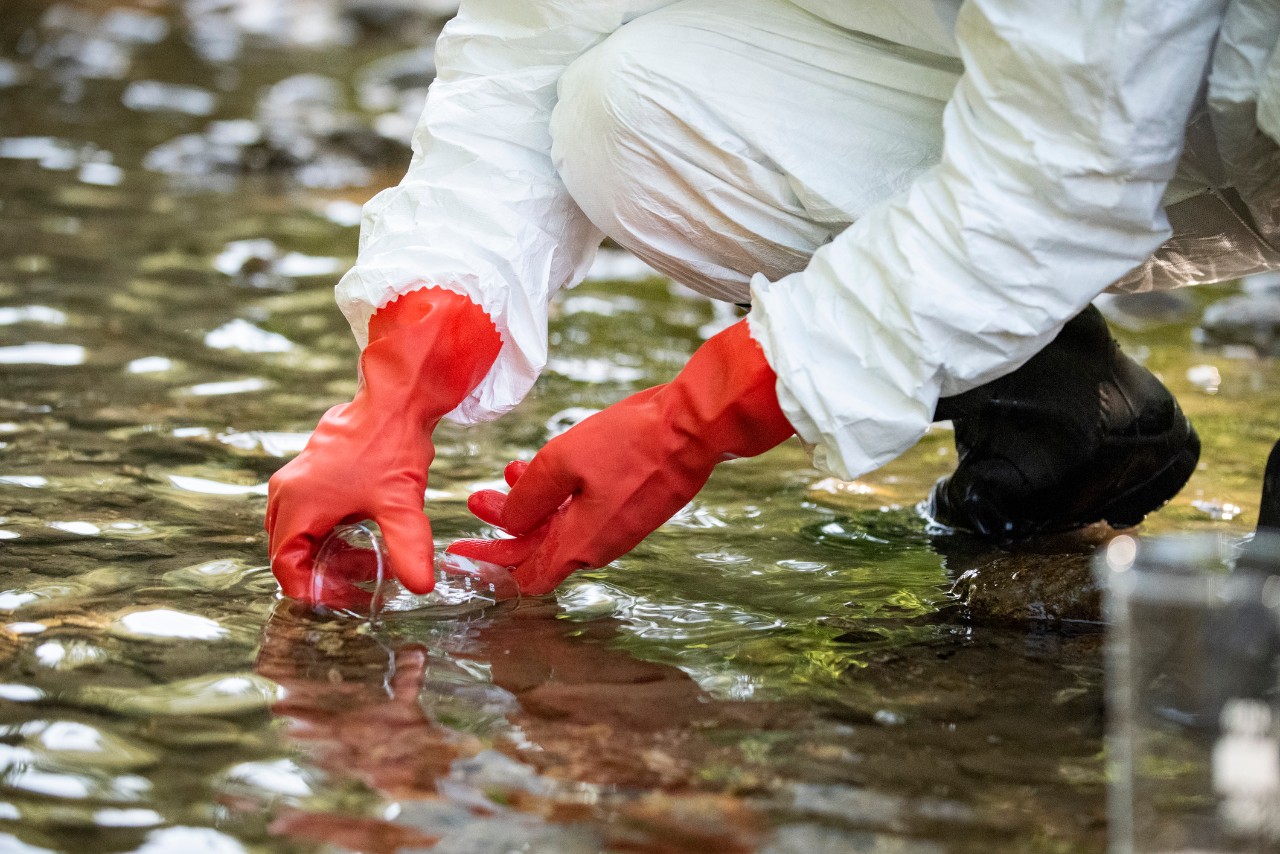
New York Times, National Geographic: EPA says ‘forever chemicals’ must be removed from tap water
The University of Cincinnati's Susan Pinney was featured in the New York Times and National Geographic in stories on the EPA's recent requirement that municipal water systems remove six synthetic chemicals linked to cancer and other health problems that are present in the tap water of hundreds of millions of Americans.
The new rule states water providers must reduce levels of industrial pollutants perfluoroalkyl and polyfluoroalkyl substances, known collectively as PFAS or "forever chemicals," to nearly zero.
Pinney, professor in the Department of Environmental & Public Health Sciences in UC's College of Medicine, director of the Center for Environmental Genetics and associate director of population science in the University of Cincinnati Cancer Center, is a nationally known expert on forever chemicals who has studied the topic for years.
“The evidence of PFAS being dangerous goes all the way back to the 1980s when chemists were doing studies, noticed that PFAS had the same chemical structure as other dangerous chemicals and they reported on it,” Pinney says. “It’s taken a very long time for us to recognize it as a human toxin. Meanwhile, all of these toxins got into our environment, and it’s going to take a long time before they leave.”
The Times cited Pinney's recently published research that found exposure to PFAS may delay the onset of puberty in girls. She said the number of people exposed to PFAS nationwide is "mind boggling."
“Puberty is a window of susceptibility,” Pinney said. “Environmental exposures during puberty, not just to PFAS, but anything, have more of a potential for a long-term health effect. What these have done is extended the window of susceptibility, and it makes them more vulnerable for a longer period of time.”
Pinney told National Geographic she "applauds" the EPA decision.
“It’s in line with what we know about the health effects of PFAS,” Pinney said.
Read the New York Times story.
Read the National Geographic story.
Pinney's research was also featured in a Columbus Dispatch story on the new EPA rule. Read the Dispatch story.
Featured photo at top of water sampling. Photo/iStock/vitranc.
Related Stories
President picks exceptional talent
April 28, 2021
The University of Cincinnati 2021 Presidential Leadership Medal of Excellence Awards honor six undergraduate scholars for scholarship, leadership, character, service and the ideals of the university. Awardees are spotlighted for exceptional academics, creativity, community service and innovation.
Grad students earn president's highest honor
April 28, 2021
The University of Cincinnati 2021 Presidential Medal of Graduate Student Excellence Awards honor three graduate scholars for scholarship, leadership, character, service and the ideals of the university. Awardees are spotlighted for exceptional academics, creativity, community service and innovation.
UC student leads effort to clean up campus adjacent Coy Field
April 7, 2021
Karthikeyan Sakthivel, a senior medical sciences undergraduate at the University of Cincinnati, has adopted Coy Field in an attempt to keep the green space clean and ready for use by UC students, area high schoolers and the community. Sakthivel is planning another cleanup event for Coy Field, which is adjacent to the university campus.
The making of a successful Faculty & Staff Campaign
May 25, 2021
More than one-third of UC’s nearly 7,000 faculty and staff have already contributed to the 2020-21 Faculty & Staff Campaign, putting the goal of 45% within reach.
Finding community and building a future
July 9, 2021
As a University of Cincinnati College of Medicine student, Sarah Appeadu, MD, ’21, remembers journaling on the “3 Cs” that got her through medical school: Community, community, community. Now, when she lists the people who supported her through four years of training—the last year in a global pandemic—it keeps growing: her family, her church, her classmates, and the college’s Office of Student Affairs and Office of Diversity, Equity and Inclusion. “I look back and it was such a crucial time to really be nurtured in that way,” she says. “I’m so thankful that I had those people. It shows being around the right people really mattered. That’s my same hope for residency even.”
New York Times: Flint Weighs Scope of Harm to Children Caused by Lead in Water
February 1, 2016
Kim Dietrich, a professor of environmental health at UC's College of Medicine, is quoted in this story on the medical problems that could develop among the thousands of young children exposed to lead-contaminated water in Flint, Mich.
Cancer-Causing Gene Found in Plasma May Help Predict Outcomes for Patients
February 18, 2016
Researchers at the University of Cincinnati have discovered that a human cancer-causing gene, called DEK, can be detected in the plasma of head and neck cancer patients.
UC Receives $1.9 Million to Study Pain
February 15, 2016
Jun-Ming Zhang, MD, of the UC College of Medicine, is the principal investigator of a $1.95 million grant to study the interacting roles of the sympathetic and sensory nervous and immune systems in back and neuropathic pain models.
MD Magazine: Generic Drug Equally Effective in Epilespy
February 22, 2016
Michael Privitera, MD, a professor of neurology at UC's College of Medicine and director of the Epilepsy Center at the UC Neuroscience Institute, is featured in this story about research he led that examined the efficacy of generic drug substitution for epilepsy.
UC to Host Regional Conference for Latino Medical Student Association
February 10, 2016
The University of Cincinnati chapter of the Latino Medical Student Association (LMSA) will host a Midwest regional conference Feb. 26-28, 2016, at the College of Medicine.
